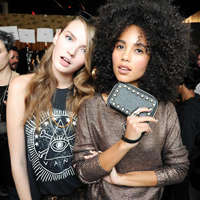
H&M has been changing the fashion industry for some time, and has become increasingly more popular among youth culture as a favorite brand and retailer, as indicated in our Global Youth Culture Studies. However fast-fashion, ironically, still does not sit easily with high-end designers and traditional fashion businesses, who feel they cannot compete with the Swedish-based chain that pumps out new collections within weeks at affordable prices. Such fashion brands are also challenged by the innovation H&M has used for marketing and advertising. From masstige collaborations with top designers such as Versace to collaborations with athletes such as David Beckham, to virtual marketing collaborations with Second Life and GoldRun for their app, and interesting interactive website campaigns that are attractive to a younger fashion consumer, H&M has often been several steps ahead of the competition. Along the way, they have also been leaders in moving the industry towards sustainability.
Today, according to the Textile Exchange, a global organization designed to promote the growth of organic cotton and producer of the Global Sustainable Textiles Market Report each year, named H&M as the biggest user of organic cotton worldwide in 2010. The report overall provides the organic cotton and sustainable textile market with estimates for the preceding year, while identifying trends and market leaders and providing market projections for the year to come.
Here are some of the results: In 2010 H&M used around 15 000 tons of organic cotton %u2013 a marked increase from previous years.
“The intention is to gradually use more organic cotton as part of our target to only use more sustainable cotton by 2020. We want to further contribute towards increased demand for organic cotton and motivate farmers for sustainable cotton cultivation” says Henrik Lampa, CSR Manager Product at H&M.
H&M has been using certified organic cotton since 2004 and since 2007 there are garments made with 100 percent organic cotton in all departments, as well as some garments made from 50 percent organic cotton and 50 percent conventional cotton. All garments made with organic cotton have a hangtag marked organic cotton.
“H&M continues to demonstrate leadership and innovation through their expansion of organic cotton utilization. In 2010, H&M took the lead this year to be the number one consumer of organic cotton. Their fun and stylish eco-collection not only resonates with their customer, but also supports H&M’s longer term commitment to create fashion more sustainably” states LaRhea Pepper, Managing Director of Textile Exchange.
As well as investing in organic cotton, H&M works to improve conventional cotton growing and to make all cotton used more sustainable. H&M has been involved with the Better Cotton Initiative (BCI) since its inception in 2004, and is an elected member of the organization’s council. The BCI is a long-term initiative that develops and promotes good farm practices allowing more cotton to be grown while reducing water and chemical use. The BCI is not a labeling scheme, nor will it provide Fairtrade or organic cotton.


